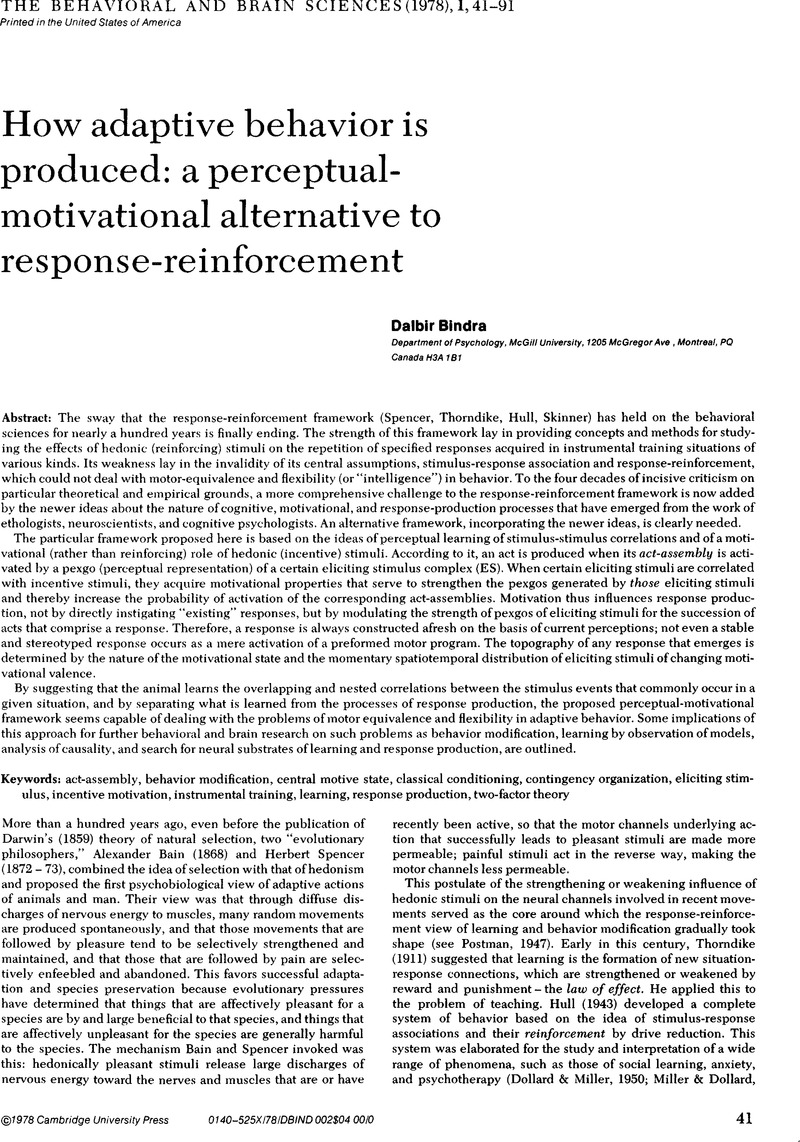No CrossRef data available.
Article contents
Perception as response
Published online by Cambridge University Press: 04 February 2010
Abstract
An abstract is not available for this content so a preview has been provided. Please use the Get access link above for information on how to access this content.

- Type
- Open Peer Commentary
- Information
- Copyright
- Copyright © Cambridge University Press 1978
References
REFERENCES
Guthrie, E. R. Association by contiguity. In: Koch, S. (Ed.), Psychology: A Study of a Science. New York: McGraw-Hill, 1957, (Chap. 3,92-157).Google Scholar
Lashley, K. The neuropsychology of Lashley. In: Beach, F., Hebb, D. O., Morgan, C. and Nissen, H. (Eds.). The neuropsychology of Lashley. New York: McGraw-Hill, 1960, (Chaps. 8,23 and 31).Google Scholar
Pribram, K H.Languages of the Brain Engle wood-Cliffs, NJ: Prentice-Hall, 1971, (Chap. 5 [91–93] and Chap 6).Google Scholar
Tolman, E. C.There is more than one kind of learning. Psychological Review., 1949,56:144–155.CrossRefGoogle ScholarPubMed
Von Uexkiill, J.Instinctive Behavior In: Schiller, C. H. (Ed ) New York: Int Universities Press, 1957, (Chap. 1, part 1).Google Scholar


